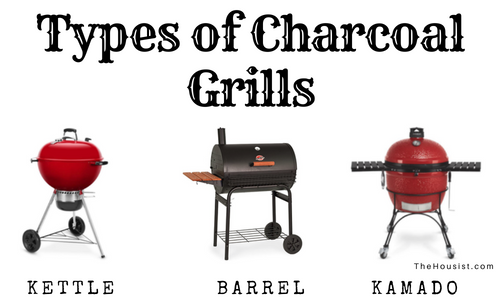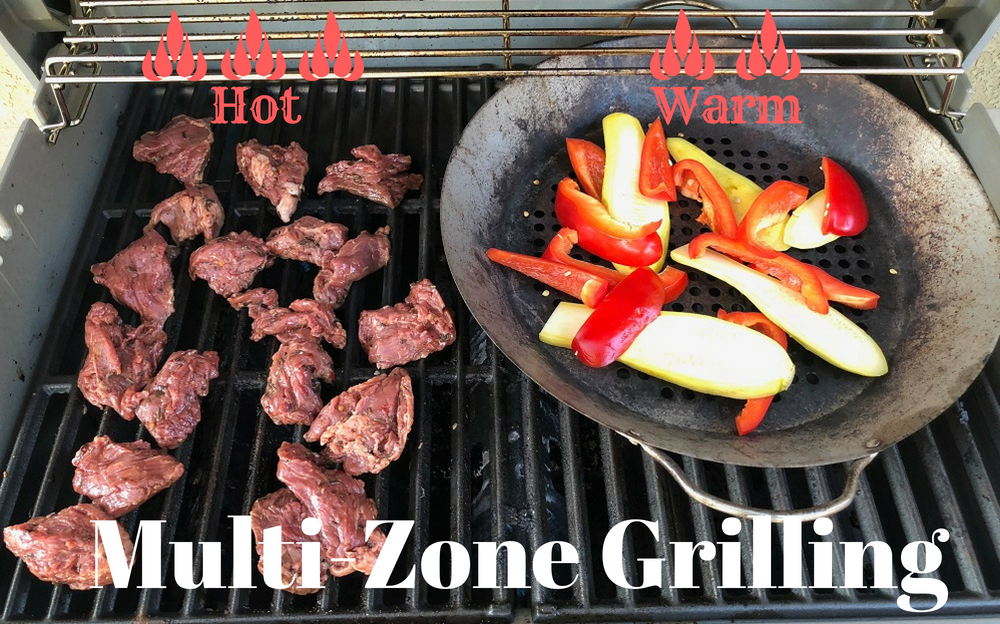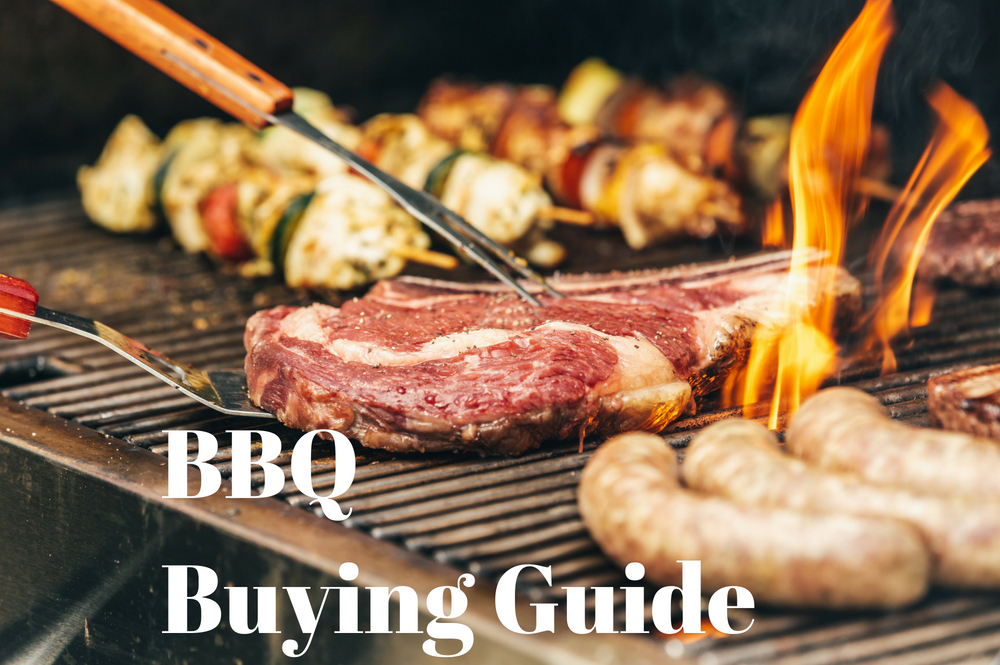Buying a grill can be a little overwhelming. Go into a store or look around online and most of the BBQ grills don’t look that different but the price tags rang from $50 to upwards of $10,000. How do you buy a grill that will meet your needs and help you grill up some great meals? While there are a lot of great grills, there is no single best grill – it all depends on your needs and how you plan to use the grill. Lucky for you, we put together this detailed grill buying guide to help you navigate the process of buying a BBQ grill.
If you already know the type and size of grill that you want, you can skip ahead to:
Where Are You Going to Use Your Grill?
The first question that you need to answer is “Where are you going to be using your grill?” If you need a grill for tailgating or camping the best grill is going to look a lot different than a grill to keep on your back patio. If you want a portable grill, you’ll want to look at some of the smaller models. If you’re going to keep it in your backyard, then a less portable but larger grill is probably a better bet.
What Type of Fuel Type Should Your Grill Use?
This can also be partially answered by the first question. If you are primarily going to be grilling somewhere that cooking with an open flame (charcoal, gas) is not allowed, such as a condo building, then you are defaulted to an electric grill. Click here to jump to our section on how to buy an electric grill.
Gas Grill vs Charcoal

Provided you don’t have any flame requirements, your options are charcoal, wood, and gas burning grills. While there have been many arguments about the merits of each, all are more than capable of cooking a delicious steak.
Wood grills tend to be very distinct and to flavor your meat with the smoke more than charcoal or gas. While charcoal grills can give a smokier flavor to your meat than a gas grill is likely to, the taste difference is often un-noticeable to many people.
The benefit of a charcoal grill is that these typically get hotter than gas grills and can better sear your meat. The main benefit of a gas grill is that they are quick and easy to light and get started with minimal cleanup.
If you lean on the side of convenience and practicality, a gas grill is probably best suited for you. If having a perfectly seared steak is your priority, go with the charcoal. Most people go with the gas grill as the are so convenient and easy to use.
How Much Should You Spend on a Grill
Once you figure out your fuel type, the next big question to answer is the price. How much do you want to spend on a grill. While price can be an indicator of quality, you can also spend $30 on a small simple charcoal grill that will cook amazing steaks.
Typically with gas grills in the $100 to $300 range, you should focus on simplicity. If you’re buying a 4 burner stainless steel grill with a side burner for $250, there’s a reason it’s a screaming deal. It probably isn’t as sturdy as the more expensive models, uses thinner gauge steel enclosure, and probably has less powerful burners. If you only want a grill for a year or two and don’t plan to move it after you set it up, the grill could still work for you.
If you want a grill that is going to still be cooking up great burgers 10 years later, then you definitely get what you pay for.
Determine what you can afford to spend and select your features based on your needs.
Related: What is Santa Maria Style Grilling
What Size Grill Do You Need?
The next question is “How many people will you typically be cooking for?” If you’re primarily going to be BBQing for you and one to two other people then a grill with ~300 square inches of primary cooking space (2 burner grill) is probably sufficient. Family of 4, you probably want to be in the ballpark of 400 square inches of primary cooking space (3 burner gas grill). If you have a big family or like to entertain, you probably want to jump up to the 600 square inches of cooking spare models (4 burner).
As a general rule of thumb, you should plan on 100 square inches of primary cooking area for each person. If you’re grilling burgers, you should plan on about 25 square inches (about a 5.5” diameter burger) per burger.
Note that there is a difference between total cooking area (often what the manufacturers boast) and primary cooking area. The primary cooking area is where you’ll be doing most of your grilling and is smaller than the total cooking area. The total cooking area typically includes a warming rack above the primary cooking area.
How to Buy Electric Grills

If you are looking at buying an electric grill, hopefully it is because you plan to use it somewhere that a gas, charcoal or wood grill is not allowed due to the open flame. If this is not the reason, please reconsider. (click here to skip to the charcoal grill section)
Electric grills do not tend to get as hot as other grills as they work by running electricity through coils. This means that your electric grill is more like an electric griddle or frying pan (honestly you might as well cook your steak or burger on a frying pan and save your money). While these coils get hot enough to cook your meat, most stay below 400 degrees, so you won’t get a good sear on your steak.
Additionally, in order for the grill to work, you’ll need to be plugged into an outlet. So if you’re grilling in the backyard, you’ll need an outlet outside or an extension cord that will reach all the way inside. If you decide to buy an electric grill, you should read this guide on how to calculate the proper size and length of extension cords.
While electric grills are pretty simple, when buying an electric grill, there are a few features you can to consider:
Electric Grill Timers
Some grills have timers in case your phone, microwave, or stove do not have one.
Nonstick Grill Surfaces
Some electric grills offer nonstick grill surfaces. These won’t have any impact on how your food tastes but it will make cleaning up afterwards easier. While most electric grills are pretty cheap (under $200), this feature can bump up the cost of your grill.
Electric Grill Size
Most electric grills are pretty small, with the ability to cook 5 burgers or less. You can get bigger ones, but as with the non-stick surfaces, it will increase your cost.
Thermostats
Some electric grills have built in thermostats. This feature isn’t really that important since electric grills do not get that hot and will just cost you more money.
Alternatively, you can save a bunch of cash and get a George Foreman Grill which will give you the same quality food.
How to Buy Charcoals Grills

While charcoal grills tend to be less convenient than gas grills they are generally cheaper and still help you make great tasting steaks. They also burn hotter than most gas grills so you’ll get a better sear from a charcoal grill. While these grills are simpler than gas grills, there are still several features you should pay attention to when buying a charcoal grill.
When grilling on a charcoal grill, you control your heat either by changing the airflow of by changing how far the grill surface is from the coals.
Controlling Airflow
Airflow on a charcoal grill is controlled with intake and exhaust vents. The more oxygen that comes in, the hotter your charcoal will be. If you want to cool down your grill, close down the air intake and deprive your grill of oxygen. Usually you will leave your exhaust vent wide open and control the airflow primarily with the intake vent.
When looking at a charcoal grill, inspect the vents to make sure that they seal well. A bad seal can make managing your airflow less precise.
Charcoal Height
The other way to control your grill heat is with the charcoal height. Some grills allow you to change the distance between your charcoal and grilling space. The closer to the grill, the higher your cooking heat.
Access to Charcoal
Finally, when buying a charcoal grill, take a look at how easy it is to access your charcoal while grilling. This will allow you to add more charcoal or to move around your charcoal and improve your heat distribution.
Types of Charcoal Grills
When you are looking at charcoal grills, you will find 3 main types of grills: kettle grills, barrel grills and kettle grills. These will vary in price and features but all are more than capable of grilling a perfect steak.

Kettle Grills
This is the most common type of charcoal grill and is what comes to mind for most people. This will be your simplest and cheapest option for a charcoal grill. Kettle grills also tend to be smaller than the other types of charcoal grills, making it your best option for camping or tailgating.
While these grills are great options for families and small groups, if you have large parties, you may want to consider a larger option.
Barrel Grills
Barrel grills are pretty straightforward. Basically they look like a sideways barrel that is cut in half. These grills offer a lot more surface area than kettle grills and often have more features – such as the ability to grill and smoke your food. Because of these, they will also cost you more than a kettle grill.
Barrel grills are a great option if you frequently entertain and want want a large grilling surface but don’t want to break open the bank for a ceramic grill.
Ceramic / Kamado Grills
Ceramic grills are exactly what they sound like – bbq grills that are made of ceramic materials. These are going to be your most expensive type of grill but they also retain heat much better than kettle or barrel grills and can provide more surface area than most kettle grills.
Due to the heat retention properties of ceramic material, these grills will heat up much faster than other charcoal grills and can hit temperatures up to 750 degrees so you can cook pretty much anything on them.
How to Buy Gas Grills

Due to their ease of use and convenience, gas grills are the most popular choice for many backyard grill masters. While they are more convenient, that doesn’t mean they are simple. Gas grills are packed with features that can be overwhelming. Don’t worry though, we’re here to walk you through buying a gas grill.
Propane or Natural Gas?
The first thing you need to decide is whether you want to run your grill off propane or natural gas. Propane is more common (and sometimes initially cheaper) but you’ll typically have to buy a separate propane tank. Additionally, you can run out of gas while grilling which is never a fun surprise.
Conversely, natural gas grill may cost a little more to start with but they connect to a natural gas fixture on your house and you’ll never run out of gas.
Though you can convert a propane grill to natural gas (or the other way around) this often voids your warranty on your grill so this might not be ideal for everyone.
What’s the Grill Made of?
The construction of your grill is one of the big factors in whether it will last 1 year or 10. The best materials to look for are:
- Stainless steel
- Enamel bonded steel
- Cast iron
- Cast aluminium
Stainless steel and aluminum won’t rust but they will discolor with use and time. Also worth noting is that stainless steel is very hard to keep shiny and clean (they always look great in the store but quickly get dirty). It is imperative that cast iron grills are painted well in order to avoid rusting. Enamels are good unless they are chipped.
If you’re in a high humidity location, your grill is going to rust regardless of the material. Stainless steel tends to do best though.
Generally, you can get a good feel for the quality of the materials simply by lifting the lid. Cheaper, lower quality grills, will feel very light weight. Higher quality grills will take a little more effort to lift the hood and their frames don’t feel as wobbly as the cheaper ones.
Setting up Multi-Zone Grilling

Multi-zone grilling means different areas of your grill are at different temperatures (ex: high, medium, and low). This is nice for cooking different foods at the same time. To facilitate this you’ll need a decent amount of grilling space and multiple burners. 2 is the minimum. 3 is better. Even more is great. Having several burners and more surface area will also let you use indirect heating methods as well.
The Burners
Burners are the heart of your grill. Cheaper grills tend to use lower quality parts on the burners. The best burners are made from brass or stainless steel (304 stainless is the best). These burners are less likely to rust out or corrode.
Infrared burners are a feature you’ll find on some higher end models. These allow the grills to heat up much hotter than a normal gas grill. They can even get up to 700 degrees. Infrared burners work by placing ceramic, glass, or metal plates over the gas burners. When the flame hits the plates, the heat is intensified and produces much more heat than a normal gas grill. If a nice dark sear is really important and you have the budget, you will want to make sure your grill has infrared burners.
What Are Flavor Bars?
Flavor bars go below the grate and above the burners; they protect the burners from dripping great while more evenly distributing the heat from the burners.
You’ll have to periodically replace these regardless of what material they are made out of. Your options are metal (will rust out), lava rocks, or ceramic rocks (the rocks get soaked with grease eventually).
What kind of grill grates should you get?
If you have a grill that is built to last, you’ll eventually go through grill grates. If you get a cheaper model, they don’t matter as much since the grill will probably only last a couple years. There are several different materials to look for:
- Porcelain coated cast iron: (best) These are high quality, leave great sear marks and are easy to clean. They are super heavy though.
- Stainless steel / porcelain coated stainless steel: Solid grates that will last. Relatively easy to clean.
- Cast Iron: These conduct heat super well but need to be oiled to prevent rusting
- Chrome / nickel coated wire: these are the lowest quality and don’t sear well.
Other Features to Consider for Your Grill
Side burners are nice to have but definitely not a necessity. They don’t get as hot as your main burners so don’t expect to utilize this space as part of your main grilling surface. Side burners are better for toasting / warming.
Rotisseries are great if you frequently cook whole chickens or turkeys. They are not usually included with your grill though so you’ll need to shell out extra cash for a rotisserie. If you do opt to get a rotisserie, make sure that it is a basket (rather than skewer) and is counterbalanced.
Grill thermometers are a nice idea but heat dissipates quickly so the temperature at the grates is a lot different than up in the hood where your thermometer is typically located. If your grill doesn’t come with one, don’t sweat it. Instead get a thermometer that you can place on the grates.
Related: The Ultimate Gas Grill Buying Guide
How to Make Your Grill Last
If you are going to invest in a grill, you’re going to want to make it last. The easiest way to do this is to get a good cover. Don’t opt for the cheapest cover – these are usually thinner material so they rip easily and are more difficult to put on. Get a heavy duty cover that sinches down so the wind won’t blow it off in a storm.
Keep your grill clean, brush or scrape off the grates. Empty the grease trap. Keep it clean and it will be more likely to last.
If you get a quality grill, it will far outlast your grates and flavor bars. Be prepared to replace these periodically. They’re a lot cheaper than a new grill. Flavor bars protect your burners which are a lot more work to replace!
